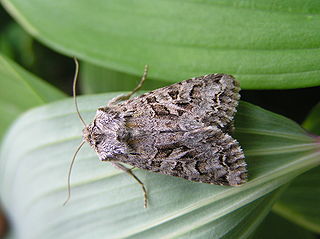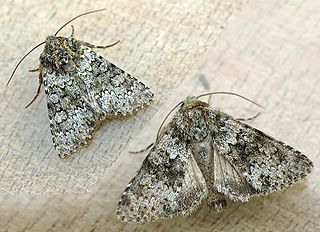
The Levant is an approximate historical geographical term referring to a large area in the Eastern Mediterranean region of Western Asia. In its narrowest sense, it is equivalent to the historical region of Syria, which included present-day Syria, Lebanon, Jordan, Israel, Palestine and most of Turkey south-east of the middle Euphrates. In its widest historical sense, the Levant included all of the Eastern Mediterranean with its islands; that is, it included all of the countries along the Eastern Mediterranean shores, extending from Greece to Cyrenaica in eastern Libya.

The Bedouin, Beduin or Bedu are nomadic Arab Tribes who have historically inhabited the desert regions in the Levant, the Arabian Peninsula, Upper Mesopotamia, and North Africa. The English word bedouin comes from the Arabic badawī, which means "desert dweller", and is traditionally contrasted with ḥāḍir, the term for sedentary people. Bedouin territory stretches from the vast deserts of North Africa to the rocky sands of the Middle East. They are traditionally divided into tribes, or clans, and historically share a common culture of herding camels and goats. The vast majority of Bedouin adhere to Islam, although there are some fewer numbers of Arab Christian Bedouins present in the Fertile Crescent.
United Synagogue Youth (USY) is the youth movement of USCJ.

There are six main administrative districts of Israel, known in Hebrew as mehozot and Arabic as mintaqah and fifteen sub-districts known as nafot. Each sub-district is further divided into cities, municipalities, and regional councils it contains.

The broad-barred white is a moth of the family Noctuidae. The species was first described by Johann Siegfried Hufnagel in 1766. It is distributed throughout Europe and is also found in Turkey, Iran, Israel, Lebanon, Syria, Kirghizia, Tajikistan, western Siberia and China.

Israel's Coastal Plain is the coastal plain along Israel's Mediterranean Sea coast, extending 187 kilometres (116 mi) north to south. It is a geographical region defined morphologically by the sea, in terms of topography and soil, and also in its climate, flora and fauna. It is narrow in the north and broadens considerably towards the south, and is continuous with the exception of the short section where Mount Carmel reaches almost all the way to the sea. The Coastal Plain is bordered to the east by - north to south - the topographically higher regions of the Galilee, the low and flat Jezreel Valley, the Carmel range, the mountains of Samaria, the hill country of Judea known as the Shephelah, and the Negev Mountains in the south. To the north it is separated from the coastal plain of Lebanon by the cliffs of Rosh HaNikra, which jut out into the sea from the Galilee mountains, but to the south it continues into the Egyptian Sinai Peninsula.

Israeli wine is produced by hundreds of wineries, ranging in size from small boutique enterprises to large companies producing over ten million bottles per year. Wine has been produced in the Land of Israel since biblical times. In 2011, Israeli wine exports totaled over $26.7 million.

The Hadenini are a mid-sized tribe of moths in the Hadeninae subfamily. As numerous hadenine genera have not yet been assigned to a tribe, the genus list is preliminary.

Hecatera dysodea, the small ranunculus, is a moth of the family Noctuidae. It is found in Europe, primarily in Central Europe and Southern Europe The northern boundary of the distribution is from the Baltic Sea and the southern part of Lithuania, Belarus, south of Moscow to the Urals. North Africa forms the distribution border in the south east they extend to the Middle East, Turkestan and across the Palearctic to Central Asia. It is an introduced species in North America, where it was first found in Utah in 1998 and Oregon in 2005.

Hecatera is a moth genus in the family Noctuidae erected by Achille Guenée in 1852.
Namangana was a genus of moths of the family Noctuidae. It is now considered a synonym of Hecatera. It consisted of the species Namangana mirabilis, which has been renamed to Hecatera mirabilis.
Pseudathetis was a genus of moths of the family Noctuidae. It is now considered a synonym of Hecatera. It consisted of the species Pseudophia fixseni, which is now renamed to Hecatera fixseni.
Hecatera cappa is a species of moth of the family Noctuidae. It is found in Morocco, Algeria, central and south-eastern Europe, Turkey, Transcaucasia, Israel, Lebanon, Jordan, Iran and central Asia.
Hecatera fixseni is a species of moth of the family Noctuidae. It is found in Egypt, Israel, Armenia, Iran, Turkmenistan, Afghanistan and Pakistan.
Hadena clara is a species of moth of the family Noctuidae. It is found in Morocco, southern Europe, Turkey, Armenia, Azerbaijan, the Caucasus region, Israel, Lebanon, Syria and Iran.

Polyommatus atlantica, the Atlas blue, is a butterfly in the family Lycaenidae. It was described by Henry John Elwes in 1905. It is found in North Africa.
Eupithecia weissi is a moth in the family Geometridae. It was described by Prout in 1938. It is found in France, Spain and North Africa.

Melissotarsus is a rare African genus of ants in the subfamily Myrmicinae. They are known from the Afrotropics and Malagasy regions, where their nests are located in living wood, built by tunneling through the wood under the bark. They are rarely seen outside of their nests, which may contribute to their perceived rarity. However, they are considered pest insects because of damage they can cause to trees, including economically important ones such as mangos and trees in the family Burseraceae, including Aucoumea klaineana, Dacryodes buettneri, and Dacryodes edulis.
Carpelimus weissi is a species of spiny-legged rove beetle in the family Staphylinidae. It is found in North America.









